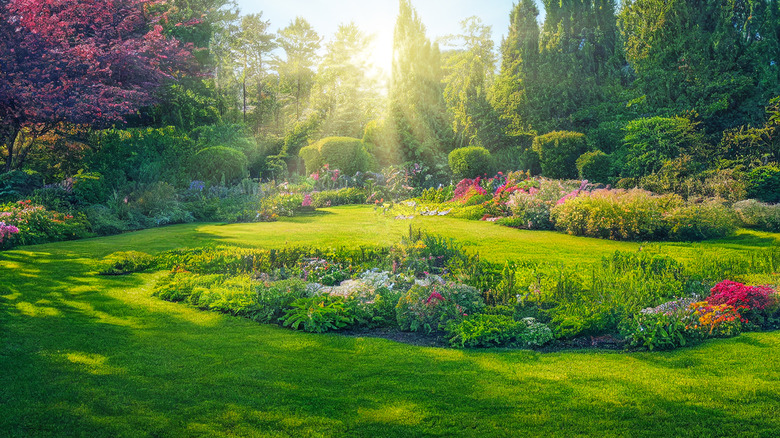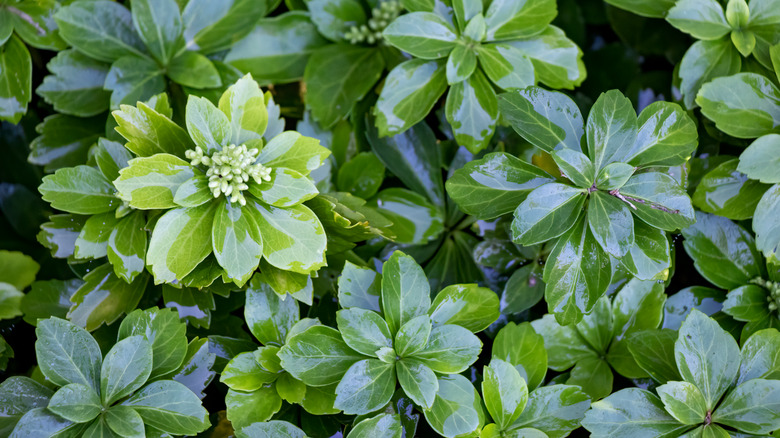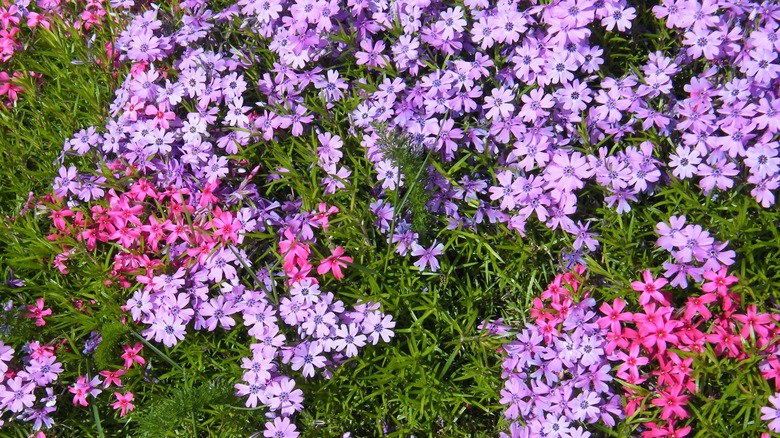Planting This Popular Ground Cover Could Destroy Your Garden
Japanese pachysandra (Pachysandra terminalis) is a popular choice for garden ground cover in the U.S. for a variety of reasons. Also known as Japanese spurge, this plant grows where others may struggle to thrive: it can tolerate nutrient-poor soil and lots of shade, making it a go-to for difficult patches of garden. Japanese pachysandra is also an evergreen perennial, with low-lying, spiked foliage that retains its color in all but the harshest winter conditions. Add its cute white flowers in the springtime, and you can see why the plant was brought from its native Eastern Asia to the U.S. as an ornamental ground cover that can survive tough conditions.
This plant may sound wonderful, but U.S. gardeners beware: this invasive ground cover is too tenacious for the rest of your garden's good. Unless it is pruned almost constantly, Japanese pachysandra will not only take over your whole garden, but quickly spread beyond your garden's boundaries, threatening native plants by blocking their access to nutrients and light. Once this aggressive plant takes hold, it can be nearly impossible to remove due to its rhizomes, or underground stems. The best route may be to avoid Japanese pachysandra entirely, but if it's already present in your garden or yard, there are a few methods you can use to limit its destruction.
How to get rid of Japanese pachysandra
Japanese pachysandra requires near-constant maintenance if you wish to cultivate it in your garden without letting it spread to your larger local environment, making its removal the better option. Because it is rhizomatic, manual removal of Japanese pachysandra can be tricky: any portion of underground stem left behind has the potential to asexually reproduce into an entirely new plant. This makes the propagation of the plant incredibly easy while making its elimination very difficult. If you decide to remove Japanese pachysandra by hand, be sure to unearth as much of the stem as possible, and keep a watchful eye for early signs of regrowth.
All-purpose herbicides such as glyphosate are also effective against Japanese pachysandra, but given glyphosate's negative environmental impacts and ability to kill all nearby plants, caution should be exercised when applying the solution to large areas. Gardeners preferring natural substitutes for weed killers such as vinegar, salt, or baking soda solutions might try a combination of manual removal and their homemade weed killer of choice to combat Japanese pachysandra. In general, the best defense against this invasive ground cover is a good offense: avoid planting Japanese pachysandra in the first place, and keep your eyes peeled for any stray rhizomes creeping into your yard or garden if you've seen the plant elsewhere in your area.
Alternatives to Japanese pachysandra
Though you may be tempted to give up on ground covers entirely after a bad run-in with this invasive pachysandra, there are plenty of reasons to seek other ground cover plants, including erosion and weed control, topsoil protection, and aesthetics. Since ground covers tend to be hardy and can grow where other plants generally don't, you can even consider growing ground cover plants instead of grass for a more full, sustainable lawn. Luckily, there are a wide variety of alternatives to invasive ground covers available for gardeners in the U.S.
One easy swap to make for Japanese pachysandra is our native pachysandra: Allegheny spurge. Other low-growing plants, such as lady and maidenhair ferns, will thrive in shaded areas, boasting the same perks of Japanese pachysandra without the uncontrollable spread and damage to your local environment. Kennett Township Land Stewardship Coordinator, Kathryn Pearlstine Freilich, likewise recommends sedge, foamflower, phlox, and wild ginger as ground covers to prevent invasive competitors, noting that "the best defense against invasive weeds are dense plantings of perennials."


